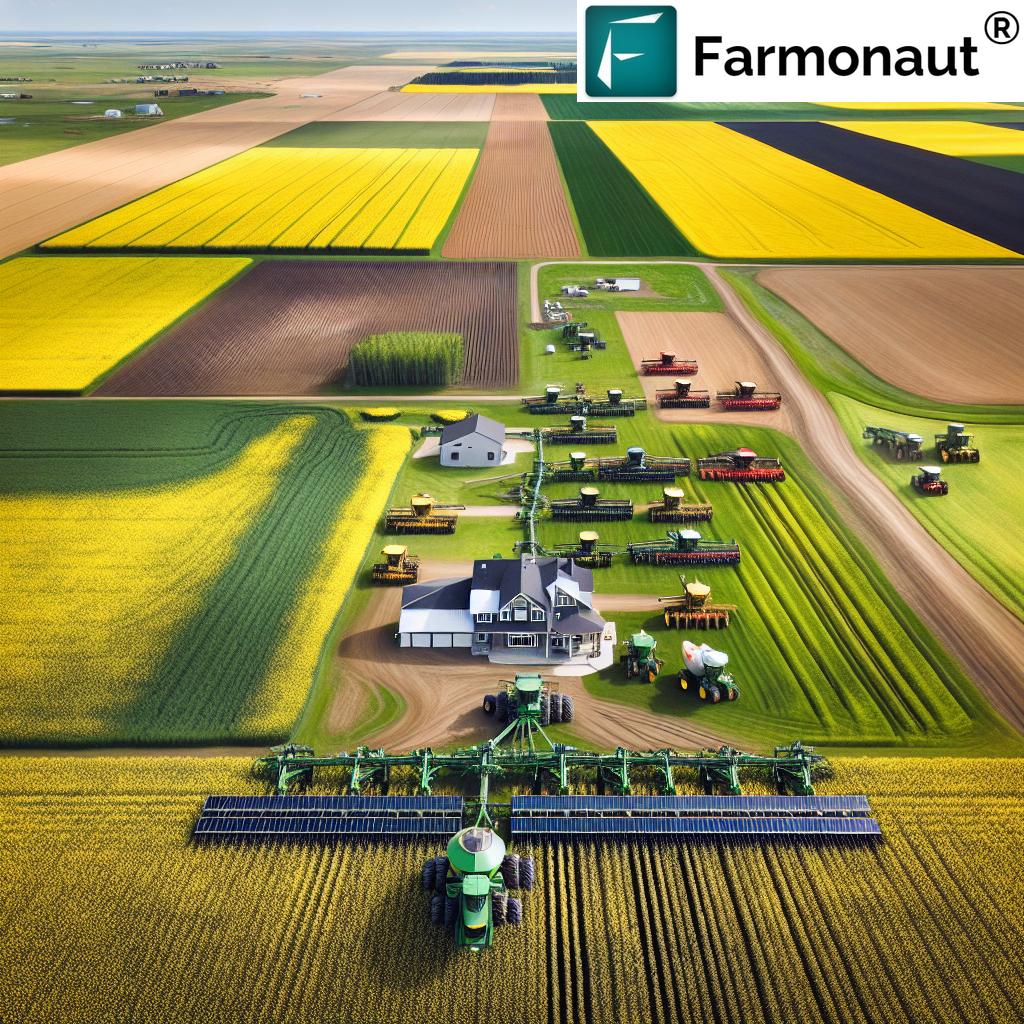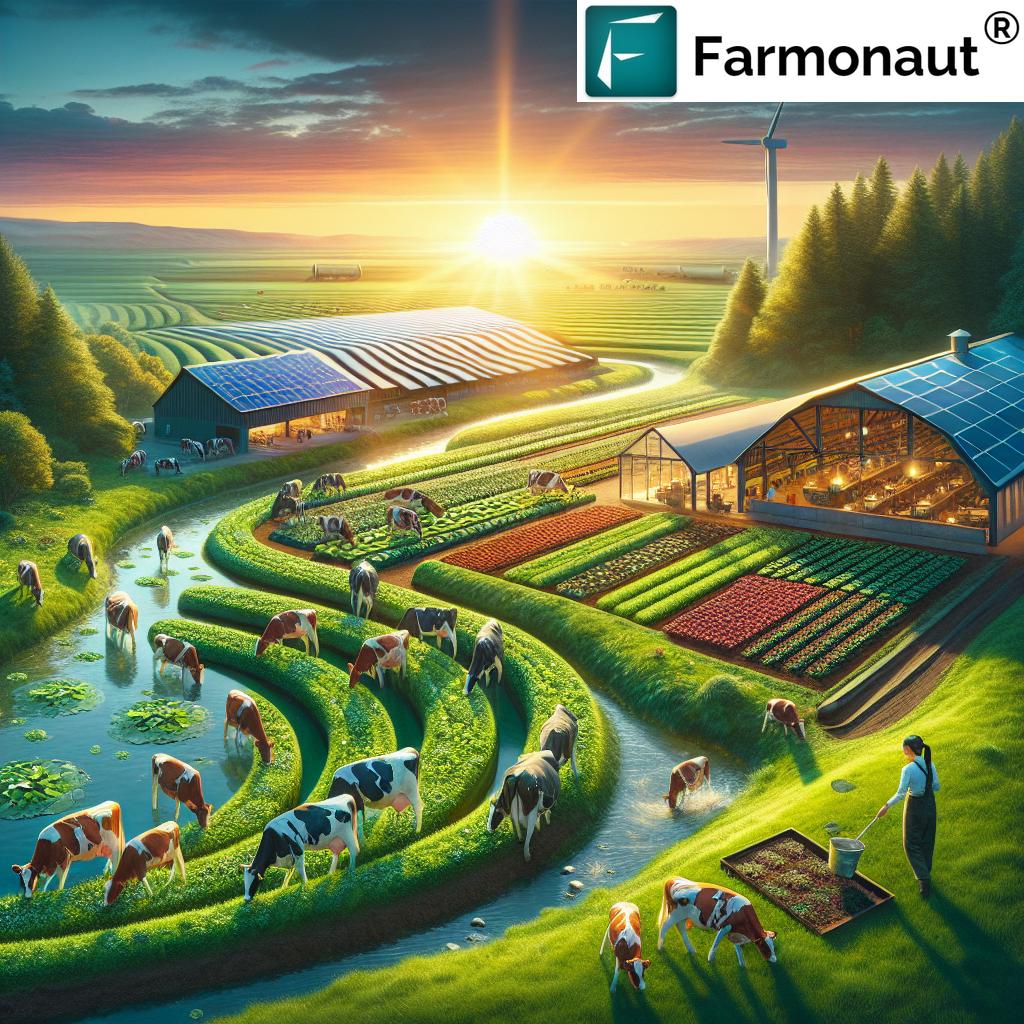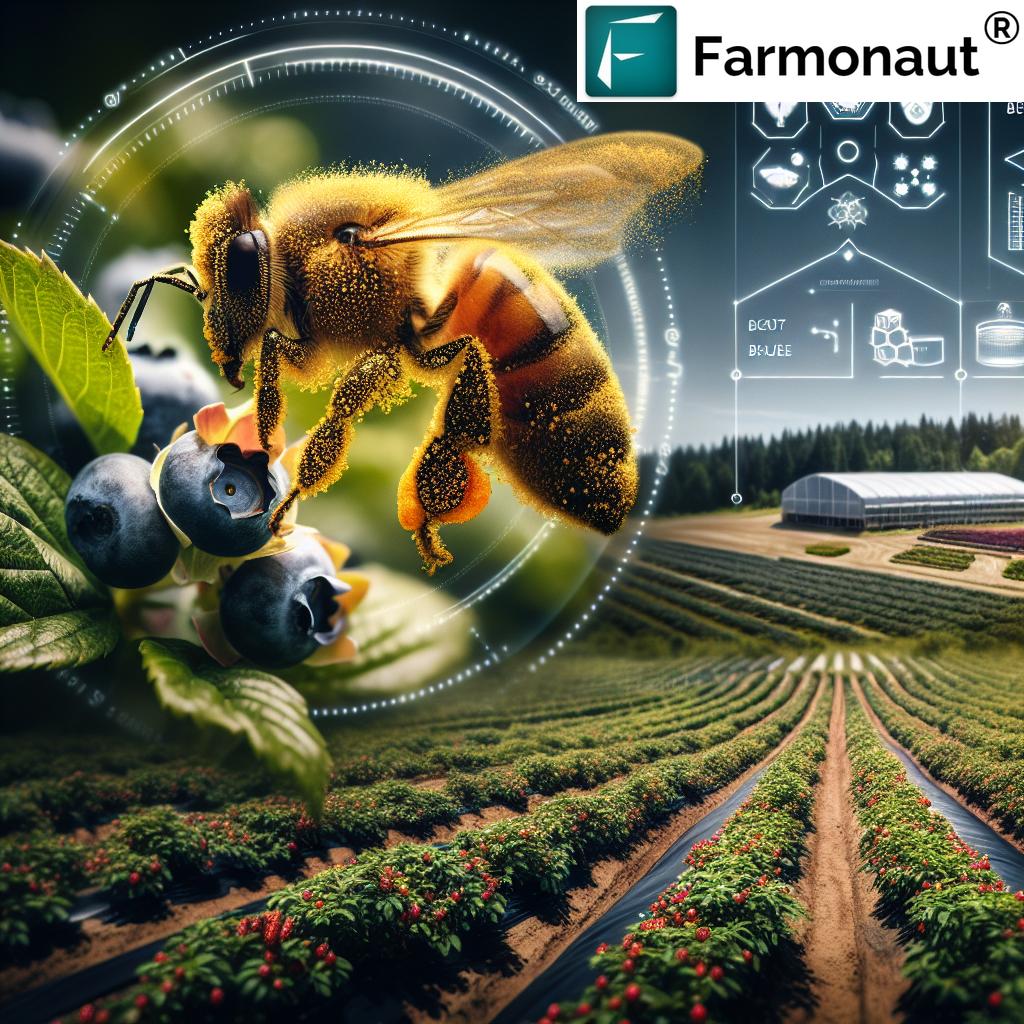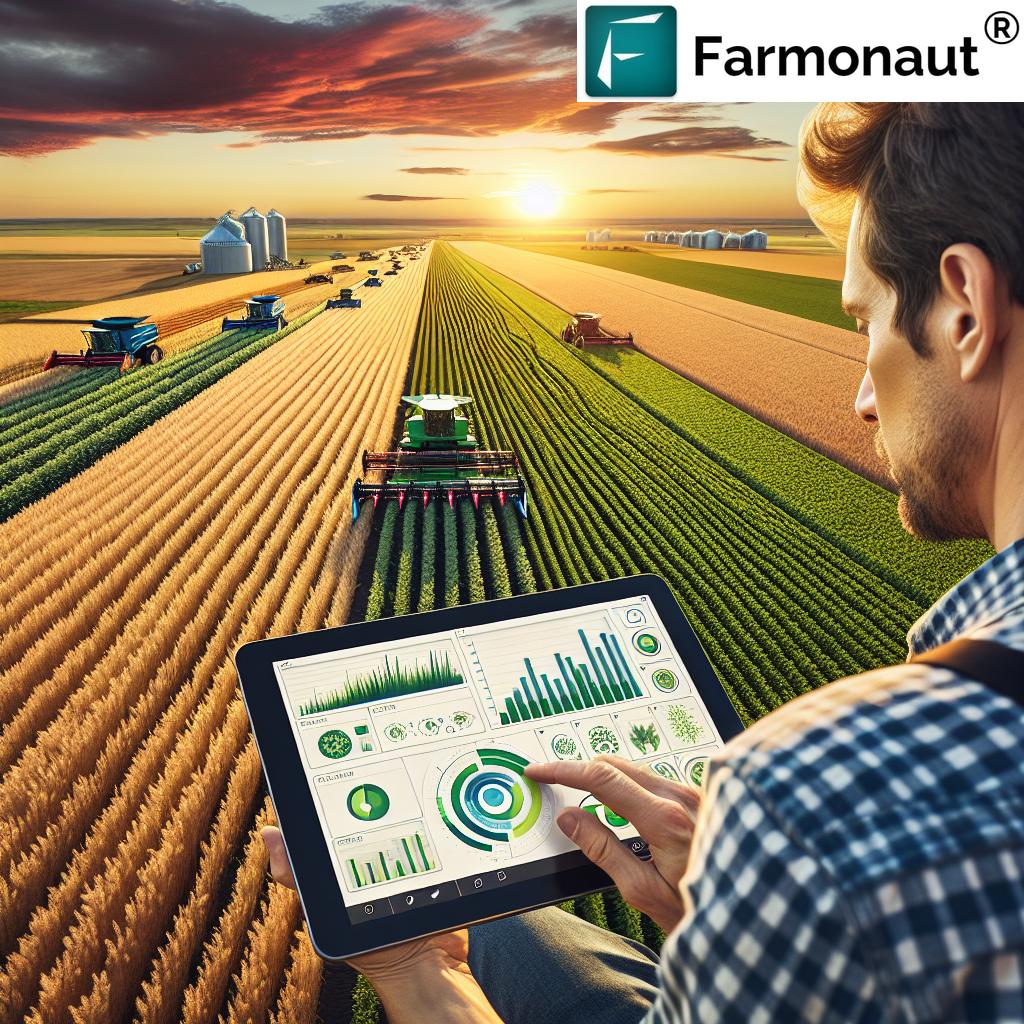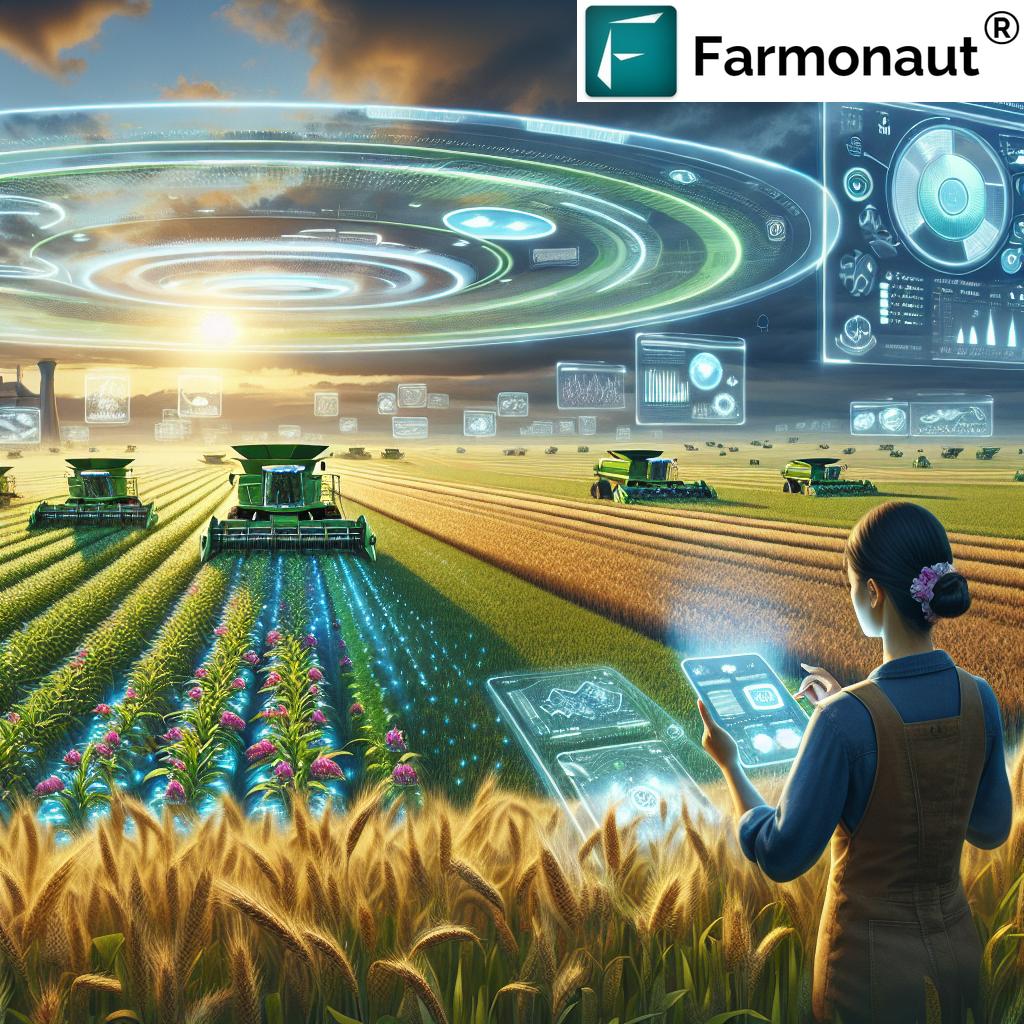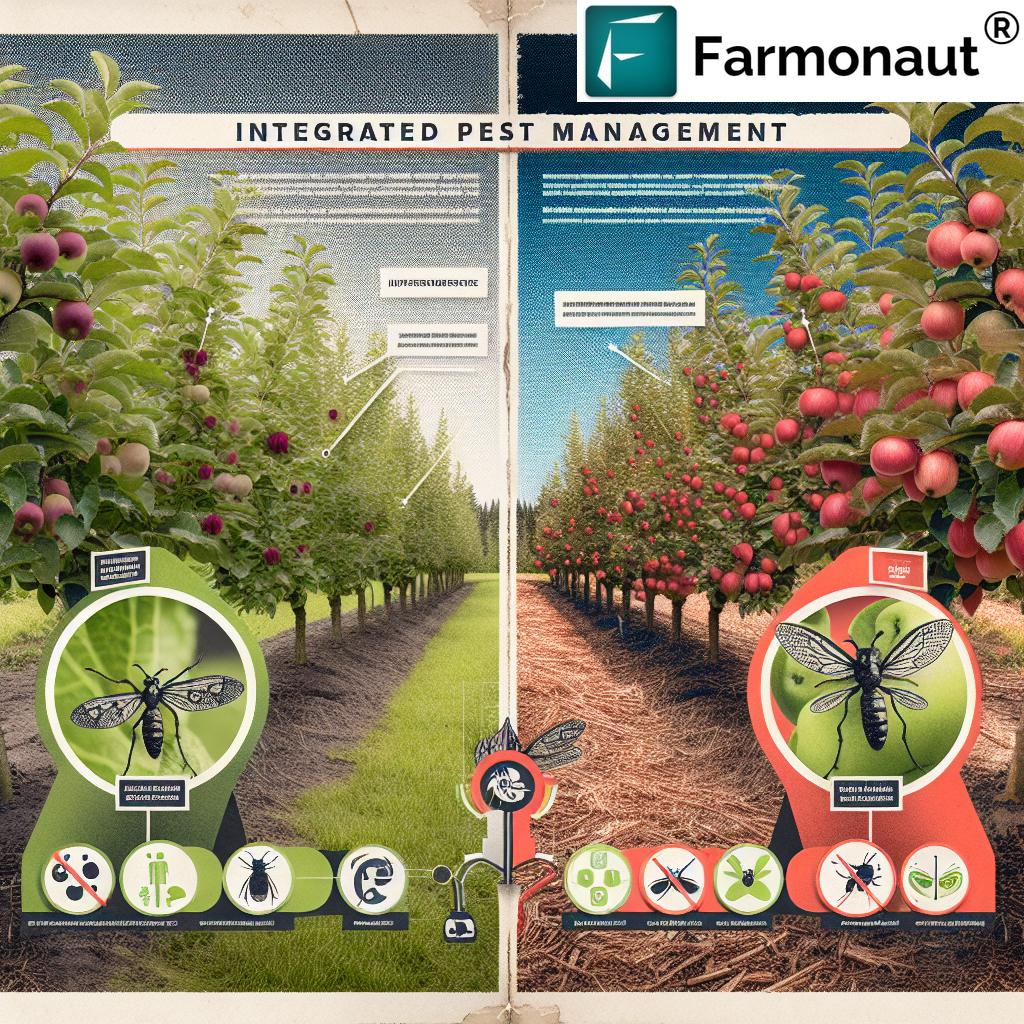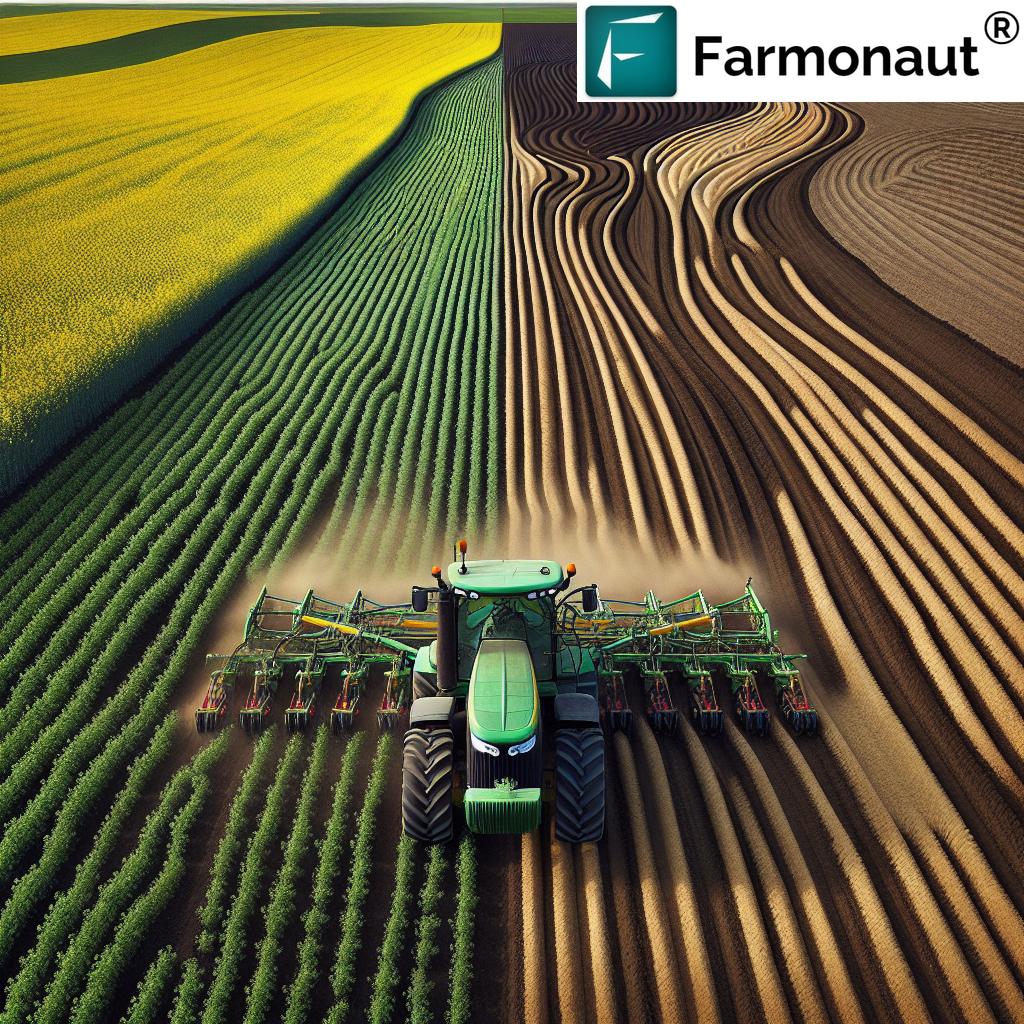Revolutionizing Canadian Agriculture: How Digital Farming and Leadership Will Shape Farm Growth in the 2020s
“By 2025, 75% of Canadian farms are expected to adopt at least one digital farming technology for improved efficiency.”
As we step into the 2020s, the landscape of Canadian agriculture is undergoing a profound transformation. The convergence of digital farming technologies and innovative leadership approaches is set to reshape the future of farming in ways we’ve never seen before. In this comprehensive exploration, we’ll delve into how these two critical factors – technology and leadership – are intertwining to drive farm growth strategies and revolutionize agricultural practices across the nation.

The Digital Revolution in Canadian Farming
The agricultural technology trends sweeping across Canada are nothing short of revolutionary. From the vast prairies of the west to the diverse farming regions of the east, digital farming technologies are rapidly becoming integral to modern agricultural practices. Let’s explore some of the key innovations shaping the future of farming in the 2020s:
- Precision Agriculture: Utilizing GPS-guided machinery and satellite imagery for precise planting, fertilizing, and harvesting.
- Internet of Things (IoT) Sensors: Monitoring soil moisture, crop health, and weather conditions in real-time.
- Artificial Intelligence and Machine Learning: Analyzing vast amounts of data to provide actionable insights for crop management and livestock care.
- Drone Technology: Offering aerial views for crop monitoring, pest detection, and even targeted spraying of pesticides.
- Blockchain: Enhancing traceability in the supply chain, ensuring food safety and transparency from farm to table.
These technologies are not just futuristic concepts; they’re becoming essential tools for Canadian farmers looking to optimize their operations and stay competitive in a global market.
The Role of Leadership in Agricultural Innovation
While technology is a powerful driver of change, it’s the quality of leadership and farm management skills that will ultimately determine the success of these innovations. The future of farming in the 2020s will be shaped by leaders who can:
- Embrace change and foster a culture of innovation
- Make data-driven decisions while balancing traditional farming wisdom
- Prioritize sustainable agriculture practices
- Develop and implement effective agtech investment strategies
- Create inclusive decision-making processes that involve all stakeholders
Leadership in agriculture is evolving to meet the challenges of the digital age. It’s no longer just about managing crops and livestock; it’s about managing technology, data, and people in an increasingly complex environment.
The Synergy of Technology and Leadership
The true power of digital farming technologies emerges when they’re coupled with strong leadership. This synergy is what will drive farm growth strategies in the coming decade. Let’s explore how this plays out in practice:
1. Data-Driven Decision Making
Digital technologies provide an abundance of data, but it takes skilled leadership to translate this data into actionable insights. Successful farm managers in the 2020s will be those who can:
- Interpret complex data sets from various sources (satellite imagery, IoT sensors, market trends)
- Use predictive analytics to make informed decisions about planting, harvesting, and marketing
- Balance data-driven insights with practical farming experience and local knowledge
2. Fostering a Culture of Innovation
Adopting new technologies requires a cultural shift within farming operations. Leaders play a crucial role in:
- Creating an agricultural workplace culture that embraces change and continuous learning
- Encouraging experimentation with new technologies and methods
- Facilitating knowledge sharing among team members and with the broader farming community
3. Strategic Investment in Agtech
With the rapid pace of technological advancement, farm innovation decision-making becomes critical. Effective leaders will:
- Develop comprehensive agtech investment strategies aligned with long-term farm goals
- Evaluate the ROI of various technologies and prioritize investments accordingly
- Stay informed about emerging technologies and their potential applications in agriculture
“Agricultural leadership skills could potentially increase farm productivity by up to 30% in the 2020s.”
Sustainable Agriculture in the Digital Age
As we navigate the future of farming in the 2020s, sustainability remains a paramount concern. Digital farming technologies, when guided by responsible leadership, can significantly contribute to sustainable agriculture practices:
- Precision Resource Management: Using IoT sensors and AI to optimize water usage and reduce fertilizer application.
- Soil Health Monitoring: Leveraging satellite imagery and soil sensors to maintain soil fertility and prevent erosion.
- Integrated Pest Management: Utilizing drones and AI for early pest detection and targeted treatment, reducing overall pesticide use.
- Carbon Footprint Reduction: Implementing technologies that help monitor and reduce greenhouse gas emissions from farming operations.
Leaders in Canadian agriculture are increasingly recognizing that sustainability is not just an environmental imperative but also a key factor in long-term profitability and resilience.
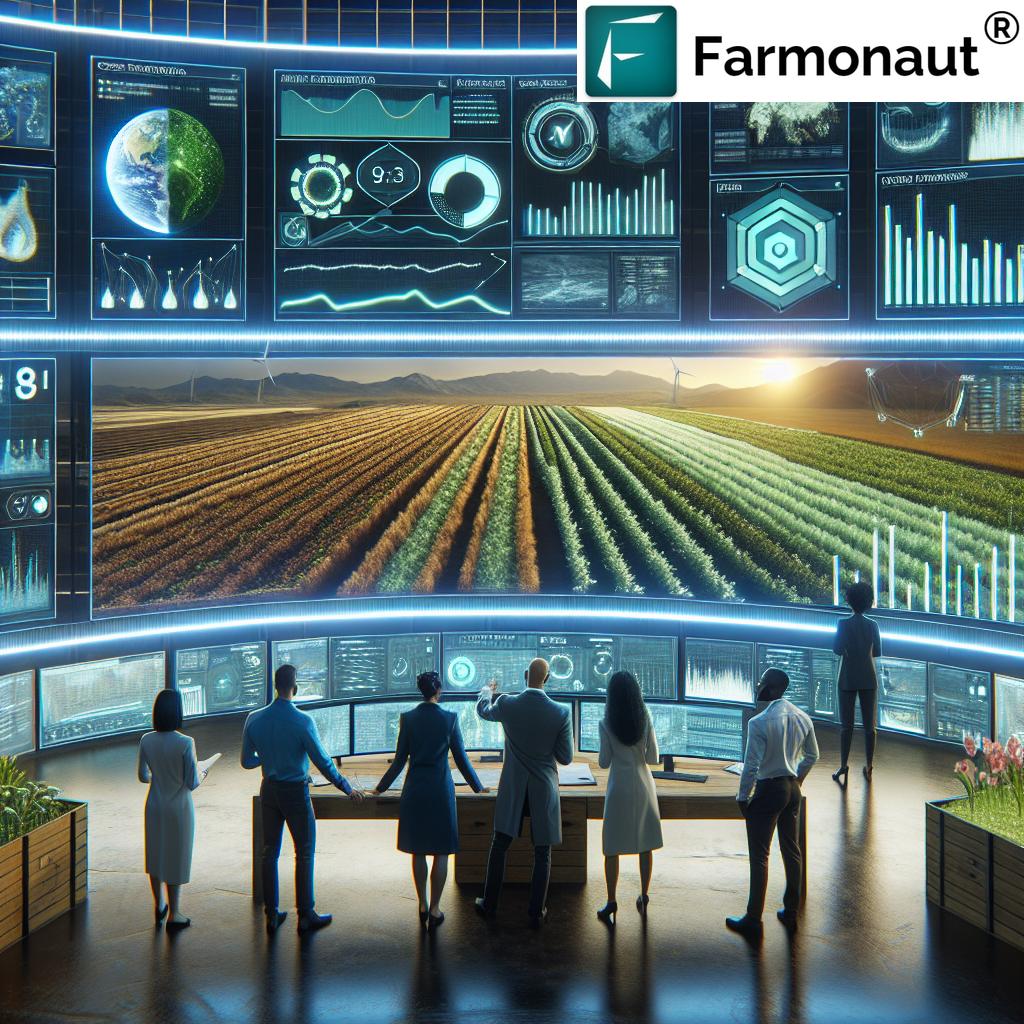
The Global Context: Canada’s Role in Shaping Agricultural Futures
As we consider the future of farming in Canada, it’s essential to place it within the global context. Canadian agriculture is not just evolving for domestic needs but is increasingly positioned to play a significant role in global food security and agricultural innovation.
1. International Market Dynamics
Canadian farmers and agribusinesses are operating in an increasingly interconnected global market. This requires:
- Understanding international market trends and adapting production accordingly
- Leveraging digital technologies to meet global quality standards and traceability requirements
- Developing strategies to navigate trade agreements and global supply chain challenges
2. Knowledge Exchange and Collaboration
The digital age facilitates unprecedented opportunities for global collaboration in agriculture. Canadian leaders are:
- Participating in international forums and research collaborations
- Sharing best practices and innovations with the global farming community
- Learning from diverse agricultural approaches around the world
3. Climate Change Adaptation
As a country spanning diverse climatic zones, Canada’s approach to agricultural adaptation can offer valuable insights globally:
- Developing climate-resilient crop varieties and farming techniques
- Using advanced weather forecasting and climate modeling to inform long-term agricultural planning
- Sharing strategies for mitigating and adapting to climate change impacts on agriculture
Challenges and Opportunities in the Digital Farming Era
While the potential of digital farming technologies is immense, their implementation comes with its own set of challenges. Addressing these challenges will be crucial for realizing the full potential of agricultural innovation in Canada:
1. Digital Divide in Rural Areas
Many rural farming communities still lack access to high-speed internet, which is essential for many digital farming technologies. Bridging this digital divide will require:
- Investment in rural broadband infrastructure
- Development of offline-capable farming technologies
- Public-private partnerships to expand digital access in remote areas
2. Data Privacy and Security
As farms become more data-driven, concerns about data ownership, privacy, and security come to the forefront. Leaders must address:
- Implementing robust data security measures
- Navigating complex data ownership and sharing agreements
- Ensuring compliance with evolving data protection regulations
3. Skills Gap and Training
The rapid pace of technological change creates a constant need for upskilling and reskilling in the agricultural workforce. This presents opportunities for:
- Developing comprehensive training programs for farmers and farm workers
- Collaborating with educational institutions to update agricultural curricula
- Creating mentorship programs to transfer knowledge between generations of farmers
4. Balancing Technology with Traditional Knowledge
While embracing new technologies, it’s crucial not to lose sight of the valuable traditional knowledge accumulated over generations. Effective leaders will:
- Integrate digital tools with time-tested farming practices
- Preserve and digitize traditional agricultural knowledge
- Foster intergenerational dialogue to blend old and new approaches
The Role of Farmonaut in Shaping Canadian Agriculture
In the context of this digital agricultural revolution, companies like Farmonaut are playing a crucial role in empowering Canadian farmers with cutting-edge technologies. Farmonaut’s satellite-based farm management solutions offer a range of tools that align perfectly with the needs of modern agriculture:
- Real-time Crop Health Monitoring: Using multispectral satellite imagery to provide insights into vegetation health and soil moisture levels.
- AI-driven Advisory Systems: Offering personalized recommendations for crop management based on real-time data analysis.
- Resource Management Tools: Helping farmers optimize their use of water, fertilizers, and other inputs.
- Weather Forecasting: Providing accurate, localized weather predictions to aid in decision-making.
These technologies are accessible through Farmonaut’s user-friendly platforms:
For developers and businesses looking to integrate these capabilities into their own systems, Farmonaut also offers an API with comprehensive developer documentation.
Digital Farming Technologies and Leadership Impact Matrix
| Technology / Leadership Aspect | Precision Agriculture | IoT Sensors | AI-driven Analytics | Drone Mapping |
|---|---|---|---|---|
| Decision-making Processes | Enables data-driven field management (Impact: 5/5) | Real-time insights for quick adjustments (Impact: 4/5) | Predictive modeling for strategic planning (Impact: 5/5) | Visual data for informed choices (Impact: 4/5) |
| Workplace Culture | Fosters tech-savvy mindset (Impact: 3/5) | Encourages data-centric approach (Impact: 4/5) | Promotes analytical thinking (Impact: 4/5) | Sparks innovation and curiosity (Impact: 3/5) |
| Knowledge Sharing | Facilitates best practice exchange (Impact: 4/5) | Enables collaborative monitoring (Impact: 3/5) | Centralizes insights for team learning (Impact: 5/5) | Visual data easy to share and discuss (Impact: 4/5) |
| Agtech Investment Strategies | High initial cost, long-term ROI (Impact: 4/5) | Scalable, modular investment (Impact: 5/5) | Ongoing investment in data capabilities (Impact: 4/5) | Versatile tool with multiple applications (Impact: 3/5) |
The Path Forward: Integrating Technology and Leadership
As we look towards the future of farming in the 2020s, it’s clear that the integration of digital farming technologies and strong leadership will be the key to success. Here are some strategies for Canadian farmers and agricultural leaders to consider:
- Continuous Learning: Stay informed about the latest agricultural technology trends and leadership practices.
- Collaborative Approach: Foster partnerships with tech companies, research institutions, and other farmers to share knowledge and resources.
- Phased Implementation: Adopt new technologies gradually, allowing time for integration and learning.
- Focus on ROI: Carefully evaluate the potential return on investment for each new technology or practice.
- Empowering Workforce: Invest in training and development to ensure your team can effectively utilize new technologies.
- Sustainability Focus: Prioritize technologies and practices that contribute to long-term environmental and economic sustainability.
Conclusion: A New Era for Canadian Agriculture
The 2020s promise to be a transformative decade for Canadian agriculture. By embracing digital farming technologies and cultivating strong leadership skills, Canadian farmers and agribusinesses are poised to lead the way in agricultural innovation on the global stage.
The synergy between technological advancement and effective leadership will not only drive farm growth strategies but also contribute to more sustainable, efficient, and resilient agricultural practices. As we navigate this exciting new era, the future of farming in Canada looks brighter than ever, filled with opportunities for those ready to embrace change and innovation.
Let’s step confidently into this digital agricultural revolution, armed with the tools and leadership skills needed to thrive in the evolving landscape of Canadian farming.
FAQ Section
Q: How will digital farming technologies impact small-scale farmers in Canada?
A: Digital farming technologies can greatly benefit small-scale farmers by providing access to precise data and insights, potentially leveling the playing field with larger operations. Tools like smartphone apps for crop monitoring or affordable IoT sensors can help small farmers optimize their resources and increase yields without significant capital investment.
Q: What role will artificial intelligence play in Canadian agriculture in the 2020s?
A: AI is expected to play a crucial role in various aspects of agriculture, including crop yield prediction, pest and disease detection, automated machinery operation, and personalized crop management recommendations. It will help farmers make more informed decisions and optimize their operations for better productivity and sustainability.
Q: How can Canadian farmers prepare for the adoption of new agricultural technologies?
A: Farmers can prepare by staying informed about emerging technologies, attending agricultural tech workshops and conferences, networking with early adopters, and starting with small-scale implementation of new technologies to test their effectiveness before full-scale adoption.
Q: What are the potential challenges in implementing digital farming technologies in rural Canada?
A: Key challenges include limited internet connectivity in some rural areas, the initial cost of technology adoption, the need for technical skills and training, and potential resistance to change from traditional farming practices. Addressing these challenges will require coordinated efforts from government, industry, and educational institutions.
Q: How will leadership in agriculture evolve with the advent of digital farming?
A: Agricultural leadership will increasingly require a blend of traditional farming knowledge and digital literacy. Leaders will need to be adept at interpreting data, managing technology investments, fostering innovation, and guiding their teams through digital transformation while maintaining focus on sustainable and ethical farming practices.







